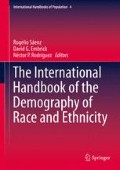Abstract
In the present situation of the Middle East, aggrandizement of ethnicity and ethnographic issues and conflicts is a kind of ignorance of the process of history. This only happened in developing countries under the forces of exterior powers. This kind of approach is considered as “Social Dementia” in social sciences, “Social Dementia” encourages a nation to live in the past and ignore the present (Yordshahian, Ethnic genealogy & national survival. Farzan Publishers, Tehran, 2001) A blind approach to such a point of view will cause disintegration; what exactly happened throughout the history of the Middle East. People of every country gain their identity under the flag of integration of ethnic groups, and it is a preface to reach a global identity as a nation. The present discussion focused on study of ethnicity and ethnic groups of Iran, based on their cultural values and social approach. How we treat a multi-cultural nation is what should be described in detail. During the field work related to the present study, many interviews with local inhabitants all over the country have been done.
Access this chapter
Tax calculation will be finalised at checkout
Purchases are for personal use only
References
Abolghasemi, M., et al. (1978). Historical Persian dictionary. Tehran: Iranian Culture Foundation.
Adamec, L. W. (Ed.). (1976). Historical Gazetteer of Iran (Tehran and Northwestern Iran, Vol. 1). Graz: Akdemische Druck-u, Verlagsanstalt.
Afshar, I. (1987). Maqalat-i Iranshinasi. Tehran: Nasl-e-Danesh Publication.
Beighi, M. B. (2007). Custom and Habitude of Fars Nomads (Vol. 3). Shiraz: Navid-e-Shiraz Publication.
Bruck, S. L., & Apenchenko, V. (1964). Atlas Narodov Mira. Moscow: Nauka Publishing House.
CIA World factbook. “Iran”. https://www.cia.gov/library/publications/the-world-factbook/geos/ir.html. Retrieved 22 Mar 2012.
Country Profile: Iran. (2008). Washington: Library of Congress – Federal Research Division. http://lcweb2.loc.gov/frd/cs/profiles/Iran.pdf. Retrieved: 2011, 2014.
Family and Population of Provinces, based on Resident and Non-Resident. (2007). Tehran: Deputy Head for Statistical Surveys, Statistical Center of Iran. URL: http://amar.sci.org.ir/Detail.aspx?Ln=F&no=262981&S=TP. Accessed June 2010.
Farid Zadeh, A. (2010). Lur and its costum. Loor Online Cultural & Social Journal, Khorramabad. http://www.loor.ir. Accessed Mar 2010.
Hinckley, H. (1973). The land and people of Iran. New York/Philadelphia: J. B. Lippincott Company Books.
Iranian people & tribes: Iranian Ethnic Groups. Iran Chamber Society. http://www.iranchamber.com/people/articles/iranian_ethnic_groups.php. Accessed June 2010.
Kamil, Abd-al Aziz Abd-al-Qadir. (1970). The race question and modern thought: Islam and the race question. Belgium: UNESCO.
Karimi, A., & Digard, J. P. (1983). Land of Bakhtiyari. In Collection of articles on anthropology II: Nomadic life. Tehran: Center of Anthropological Studies.
Khiabani, J., & Baghosian, B. (2010). Turkmen tribes. Iran Chamber Society. http://www.iranchamber.com/people/articles/turkman_tribes_cultural_athletic.php. Retrieved Jun 2010.
Lewis, M. P. (2009). Ethnologue: Language of the world (16th ed.). Dallas: SIL International.
Malyarchuk, B. A., Derenko, M. V., Denisova, G. A., et al. (2002). Mitochondrial DNA polymorphism in populations of the Caspian Region and Southeastern Europe. Russian Journal of Genetics, 38(4), 434–438.
Mirniya, A. (1990). Tribes and Clans of Iranian Kurdish Nomads. Tehran: Nasl-e-Danesh Publication.
Mohebbi, M., & Mohebbi, Z. (2010). Simplest way to reach the most complicated goal: In the urban planning, questions are ours and answers are the natives’s. Journal of Urban Planning and Development, 136(2), 154–161.
Polo, M. (1920). The travels of Marco Polo (H. Yule, Trans. & H. Cordier, Ed.). London: John Murray. (Chapter 21).
Rashidvash, V. (2009). The race of the Azerbaijani people in Iran (Atropatgan). Humanity and Social sciences Journal, 4(1), 53–60. Cairo, Egypt: IDOSI Pulications.
Safizadeh, S. (1999). History of Kurd and Kurdestan. Tehran: Atiyeh Publication.
Saidiyan, A. (1991). Peoples of the world. Tehran: Science and Life Publication.
Salari, M. (2010). Anthropology of Iran, culture and arts. Tehran: Afarinesh Publication.
Shiel, M. (1856). Glimpses of life and manners in Persia. London: John Murray.
Smedley, A. (2007). The history of the idea of race… and why it matters. Presented at the conference “Race, Human Variation and Disease: Consensus and Frontiers”, AAA, Warrenton.
Sober, E. (2000). Philosophy of biology. New York: Westview Press.
Statistical Center of Iran. (2012). Province based presentation of Iran’s population, Tehran. http://www.amar.org.ir. Retrieved 22 Mar 2012.
Thomas, J., Francois, L., & Greenough, R. (1969). Four statements on race question. Paris: UNESCO. http://unesdoc.unesco.org/images/0012/001282/128291eo.pdf
University of Texas Libraries, Perry-Castaneda Library, Map Collection. http://www.lib.utexas.edu/maps/middle_east_and_asia/iran_ethnoreligious_distribution_2004.jpg. Retrieved June 2010.
US L. C. (2010). US Library of Congress Country Studies: Turkmenistan, Washington, DC.
Van Bruinessen, M. (2000). Agha, shaikh and state: The social and political structures of Kurdistan (Ibrahim Younesi, Trans.). Tehran: Nashr Paniz.
Yarshater, E. (Ed.). (1989). Encyclopedia Iranica (Vol. 3). London: Routledge & Kogan Paul.
Yordshahian, E. (2001). Ethnic genealogy & national survival. Tehran: Farzan Publishers.
Zakiev, M. (2003). Origin of Turks and Tatars (p. 474). Moscow: Insan.
Author information
Authors and Affiliations
Corresponding author
Editor information
Editors and Affiliations
Rights and permissions
Copyright information
© 2015 Springer Science+Business Media Dordrecht
About this chapter
Cite this chapter
Mohebbi, M., Mohebbi, Z. (2015). Demography of Race and Ethnicity in Iran. In: Sáenz, R., Embrick, D., Rodríguez, N. (eds) The International Handbook of the Demography of Race and Ethnicity. International Handbooks of Population, vol 4. Springer, Dordrecht. https://doi.org/10.1007/978-90-481-8891-8_18
Download citation
DOI: https://doi.org/10.1007/978-90-481-8891-8_18
Publisher Name: Springer, Dordrecht
Print ISBN: 978-90-481-8890-1
Online ISBN: 978-90-481-8891-8
eBook Packages: Humanities, Social Sciences and LawSocial Sciences (R0)

